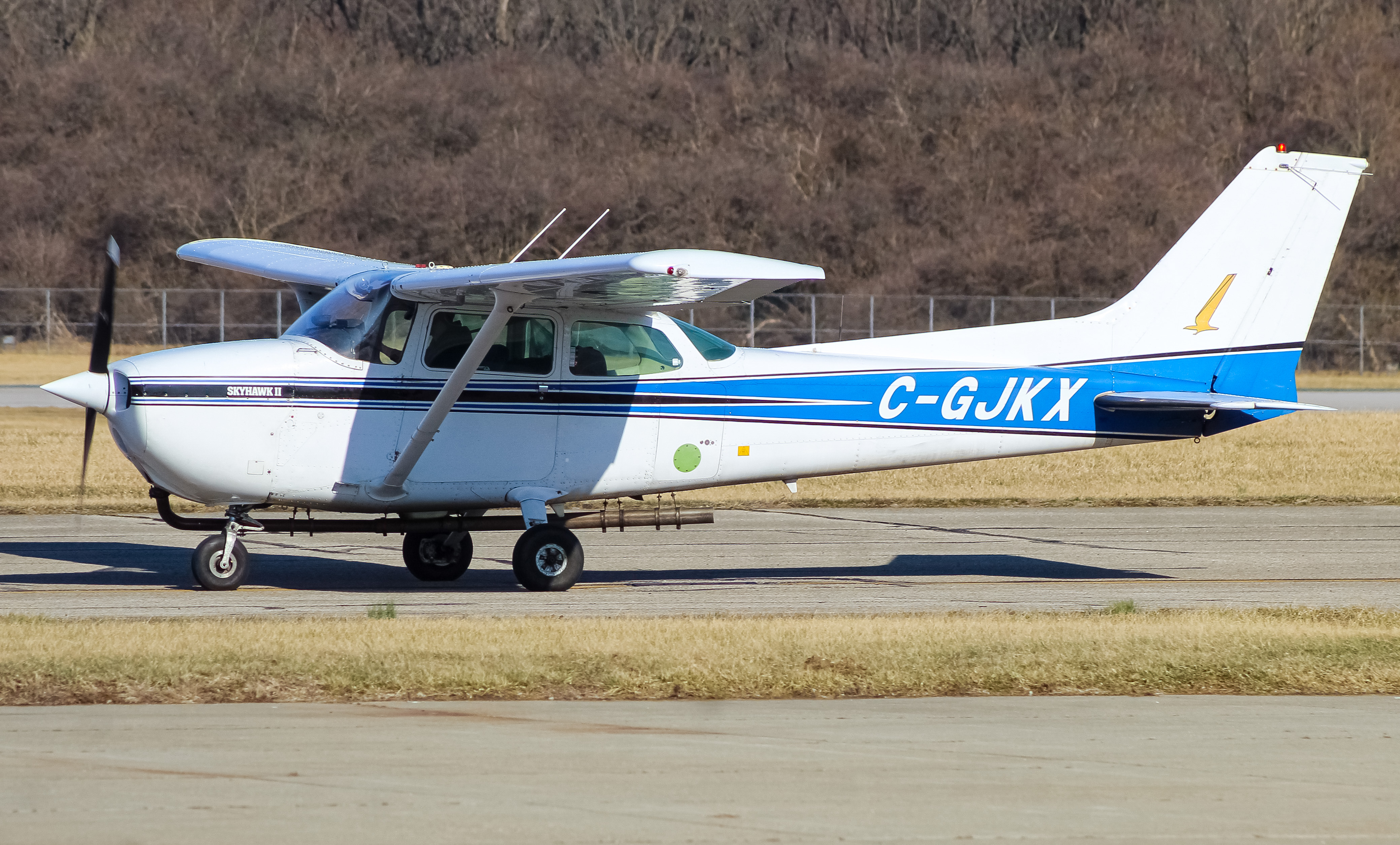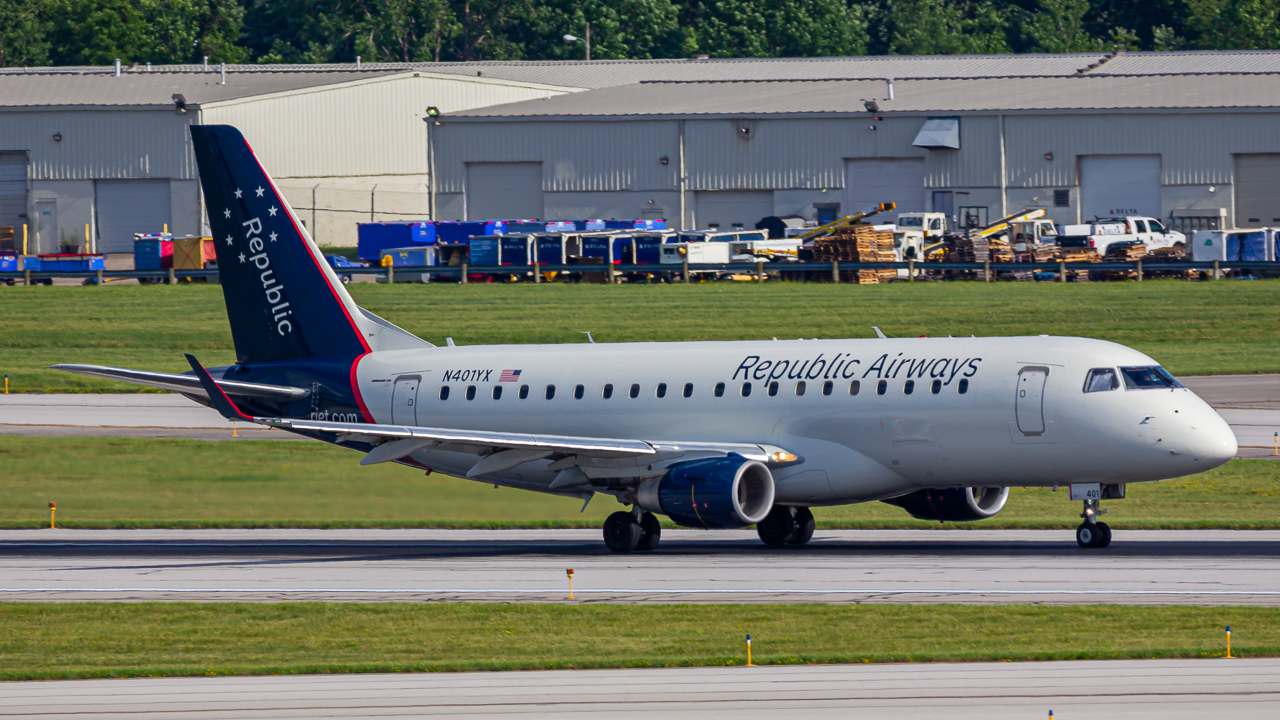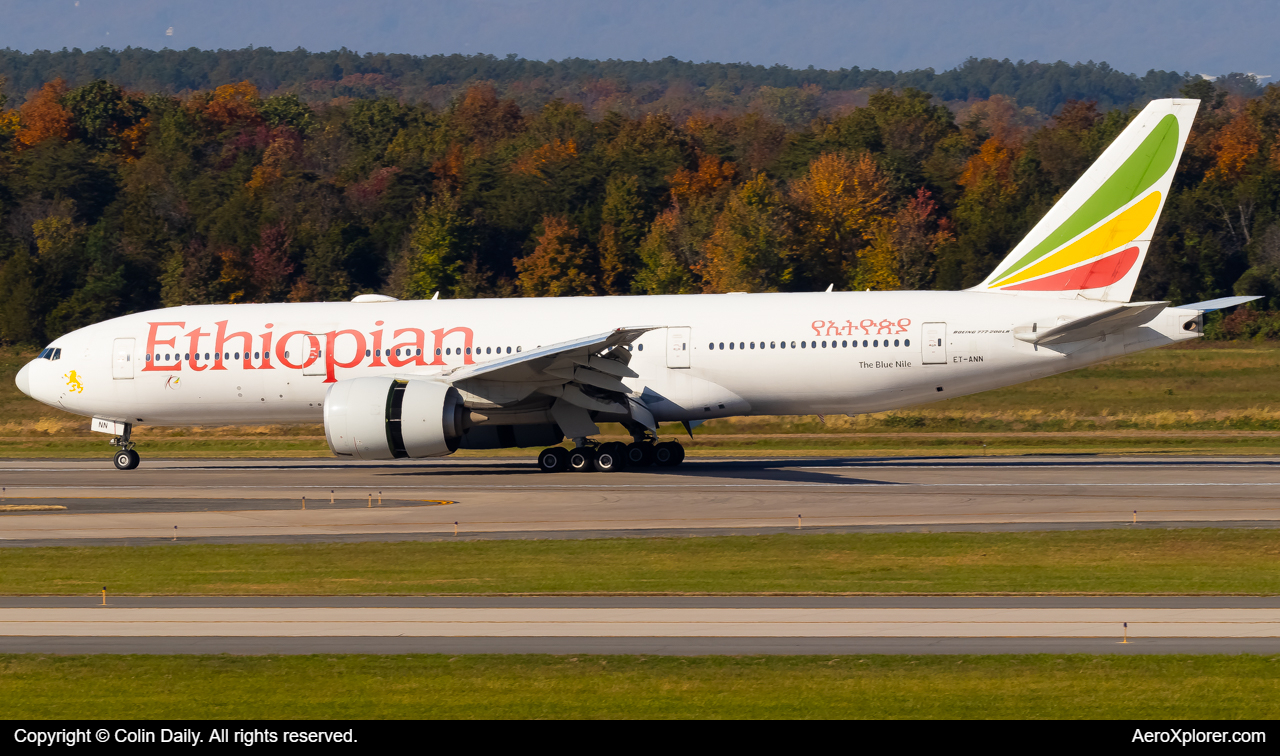On February 12, 2009 at 10:17 p.m., Colgan Air Flight 3407 en route to Buffalo (BUF) from Newark (EWR) tragically reshaped modern aviation history. The Bombardier Dash 8 Q400, which held 49 people total, crashed on final approach due to an aerodynamic stall that was severely aggravated by the captain and first officer. At 47 years old, Captain Marvin Renslow, who had accumulated 3,379 flight hours, reacted to the aerodynamic stall by pulling back on the yoke instead of pushing it forward and adding full power. Simultaneously, the first officer raised the landing gear and flaps, which further aggravated the stall. By the end of that evening, 50 people had lost their lives.
In the investigation following the accident, the National Transportation Safety Board (NTSB) stated that four main factors contributed to the accident: the flight crew’s failure to monitor airspeed in relation to the rising position of the low-speed cue, the flight crew’s failure to adhere to sterile cockpit procedures, the captain’s failure to effectively manage the flight, and Colgan Air’s inadequate procedures for airspeed selection and management during approaches in icy conditions. Additionally, the NTSB also said that fatigue played a factor in the accident, but couldn’t ascertain the extent to which fatigue degraded performance.

The reason this is important is that both pilots had far more than the currently required 1,500 flight hours that resulted from this accident. According to the investigation, sterile cockpit procedures and lack of airspeed monitoring played the most significant role in the crash, not a lack of flight time. Yet, following this accident, the FAA made several rule changes, most notably increasing the Airline Transport Pilot (ATP) minimum flight hours from 250 to 1,500. The extreme increase in the hourly requirement has made it six times harder for one to make their way from being a normal civilian to a passenger-carrying airline pilot.
From the moment a pilot steps into the cockpit of a Cessna 172, they are being charged at exorbitant rates financially. In fact, the average hourly rate to rent a Cessna 172 stands at $131 per hour, and that doesn’t even include the flight instruction, which can sometimes run upwards of $50 per hour. All in all, the average pilot is in for around $50,000 to earn their Private Pilot’s License (PPL) and Instrument Rating and Commercial Pilot License (CPL), which must not be confused with an ATP Certificate. The CPL allows you to be compensated for certain types of flying such as towing gliders, crop-dusting or flight instruction, but in no way does the CPL grant you the ability to fly paying passengers from point A to point B.

Due to the sixfold increase in hourly requirements that resulted from the Colgan Air crash, the pilot shortage has been exacerbated. Republic Airlines expects the industry to be short nearly 8,000 pilots by 2023, while other estimates are higher, even in the range of 12,000. This demand for pilots has largely damaged regional airlines such as Skywest and Republic, as thousands of pilots are currently transitioning from lower paying regional carriers to the mainline carriers.
Many regional airlines are now slashing scheduled flights, specifically those to smaller airports in the Midwest. Skywest recently announced last month that it would be cutting scheduled flights to Decatur, Ill, Paducah, Ky., and Mason City, Iowa. Republic Airlines Chief Financial Officer Joseph Allman is already talking about reducing the airline's block hours (how it measures capacity) from 9.5 to 9. Furthermore, Allman alluded to the fact that the airline could be at 20% higher capacity if not for pilot shortages.

With the plethora of flight cancellations and staffing shortages, the question becomes, how do regional airlines remedy the pilot shortage situation? The answer lies in lowering the ATP hourly requirements to get pilots into the cockpit faster, at a lower cost, and more efficiently. Recent legislation passed allowing some pilots to get a ‘Restricted’ ATP at just 1,000 hours, although an Associates Degree from an approved college is required.
With the industry moving quickly to relieve the incoming pilot shortage that was further agitated by the pandemic, the FAA and Congress must work together to funnel pilots into the system at a cheaper rate while still providing the high quality training and education necessary. Simply put, until new legislation is passed to lower the hour requirements, there will continue to be flight cancellations and pilot shortages throughout the country.
Comments (32)
 kstl.spotter
wow! thanks for sharing!
kstl.spotter
wow! thanks for sharing!
 calvinaviationsfo
F
calvinaviationsfo
F
 midwest_aviation
this is a banging article
midwest_aviation
this is a banging article
 Panteley Shmelev
I likes the 'why Danny Devito is thick' joke !
Panteley Shmelev
I likes the 'why Danny Devito is thick' joke !
 Panteley Shmelev
Anyways my main question is where can I submit my article?
Panteley Shmelev
Anyways my main question is where can I submit my article?
 midwest_aviation
Go to the "article publisher" page on your dashboard, and fill out everything. Don't forget to press save if you exit, and publish when you're done!
midwest_aviation
Go to the "article publisher" page on your dashboard, and fill out everything. Don't forget to press save if you exit, and publish when you're done!
 jorgwinkler
Thanks for sharing this!
jorgwinkler
Thanks for sharing this!
 Escobia
Escobia
 canada pharmaceuticals online generic
Heya fantastic blog! Does running a blog similar to this take a great deal of work? I've very little expertise in computer programming but I had been hoping to start my own blog in the near future. Anyways, if you have any suggestions or techniques for new blog owners please share. I understand this is off subject nevertheless I simply needed to ask. Cheers!
canada pharmaceuticals online generic
Heya fantastic blog! Does running a blog similar to this take a great deal of work? I've very little expertise in computer programming but I had been hoping to start my own blog in the near future. Anyways, if you have any suggestions or techniques for new blog owners please share. I understand this is off subject nevertheless I simply needed to ask. Cheers!
 LeroyMum
visit this site https://orbiter-finance.at/2023/11/19/orbiter-finances-cross-rollup-bridge-aims-to-transform-interchain-communication-for-defi-ecosystem/
LeroyMum
visit this site https://orbiter-finance.at/2023/11/19/orbiter-finances-cross-rollup-bridge-aims-to-transform-interchain-communication-for-defi-ecosystem/
 Williamshife
look these up https://1inch-dex.com/2023/11/17/understanding-the-benefits-of-1inch-key-takeaways-from-the-whitepaper/
Williamshife
look these up https://1inch-dex.com/2023/11/17/understanding-the-benefits-of-1inch-key-takeaways-from-the-whitepaper/
 Jseraldfeest
May I simply say what a relief to uncover a person that actually understands what they're talking about on the internet. You actually know how to bring an issue to light and make it important. A lot more people should read this and understand this side of the story. I can't believe you're not more popular since you surely possess the gift.
http://newsbeautiful.ru/unikalnoe-obrazovanie-gde-priobresti-diplom-otvechayushhiy-tvoim-trebovaniyam/
https://forum.zub-zub.ru/viewtopic.php?t=25835
http://a90275db.beget.tech/2024/05/17/kupit-diplom-vash-shans-stat-luchshim-v-svoey-oblasti.html
Jseraldfeest
May I simply say what a relief to uncover a person that actually understands what they're talking about on the internet. You actually know how to bring an issue to light and make it important. A lot more people should read this and understand this side of the story. I can't believe you're not more popular since you surely possess the gift.
http://newsbeautiful.ru/unikalnoe-obrazovanie-gde-priobresti-diplom-otvechayushhiy-tvoim-trebovaniyam/
https://forum.zub-zub.ru/viewtopic.php?t=25835
http://a90275db.beget.tech/2024/05/17/kupit-diplom-vash-shans-stat-luchshim-v-svoey-oblasti.html
 JamesDieds
Explore Toronto's Wine Districts: A Guide to Local Vintages and Taste Experiences - [url=https://toronto-wine.netlify.app]https://toronto-wine.netlify.app[/url]
JamesDieds
Explore Toronto's Wine Districts: A Guide to Local Vintages and Taste Experiences - [url=https://toronto-wine.netlify.app]https://toronto-wine.netlify.app[/url]
 Rogerthuth
Discover Canada's Rich Wine Heritage and Culture | The Wine Story - [url=https://wine-clubs-canada.netlify.app]wine-clubs-canada.netlify.app[/url]
Rogerthuth
Discover Canada's Rich Wine Heritage and Culture | The Wine Story - [url=https://wine-clubs-canada.netlify.app]wine-clubs-canada.netlify.app[/url]
 Robeertmef
https://medmens.ru
Robeertmef
https://medmens.ru
 JoesphJal
Wine Class Toronto - [url=https://wine-class-toronto.blogspot.com]https://wine-class-toronto.blogspot.com[/url]
JoesphJal
Wine Class Toronto - [url=https://wine-class-toronto.blogspot.com]https://wine-class-toronto.blogspot.com[/url]
 RobertKix
A Comprehensive Guide to the History and Evolution of Wine Collecting - Wine Membership - [url=http://vino-school.wikidot.com]http://vino-school.wikidot.com[/url]
RobertKix
A Comprehensive Guide to the History and Evolution of Wine Collecting - Wine Membership - [url=http://vino-school.wikidot.com]http://vino-school.wikidot.com[/url]
 RicardoMex
Discover Canada's Rich Wine Heritage and Culture | The Wine Story - [url=https://wine-clubs-canada.netlify.app]wine-clubs-canada.netlify.app[/url]
RicardoMex
Discover Canada's Rich Wine Heritage and Culture | The Wine Story - [url=https://wine-clubs-canada.netlify.app]wine-clubs-canada.netlify.app[/url]
 pharmacies online
Your style is unique in comparison to other folks I've read stuff from. Thank you for posting when you have the opportunity, Guess I will just bookmark this blog.
pharmacies online
Your style is unique in comparison to other folks I've read stuff from. Thank you for posting when you have the opportunity, Guess I will just bookmark this blog.

 Lorenzonup
Explore Wine Subscription Services in Canada: Best Clubs, Features, and Benefits for Wine Enthusiasts - Wine Subscription Canada - [url=http://wine-lore-institute.wikidot.com]http://wine-lore-institute.wikidot.com[/url]
Lorenzonup
Explore Wine Subscription Services in Canada: Best Clubs, Features, and Benefits for Wine Enthusiasts - Wine Subscription Canada - [url=http://wine-lore-institute.wikidot.com]http://wine-lore-institute.wikidot.com[/url]
 BrockEnawl
Unveil Local Wine Scenes: A Journey into Regional Wine Adventures - Wine Clubs Nnear Me - [url=http://vinology-academy.wikidot.com]vinology-academy.wikidot.com[/url]
BrockEnawl
Unveil Local Wine Scenes: A Journey into Regional Wine Adventures - Wine Clubs Nnear Me - [url=http://vinology-academy.wikidot.com]vinology-academy.wikidot.com[/url]
 cialis pharmacy online
You really make it seem so easy with your presentation but I find this matter to be really something that I think I would never understand. It seems too complicated and very broad for me. I'm looking forward for your next post, I will try to get the hang of it!
cialis pharmacy online
You really make it seem so easy with your presentation but I find this matter to be really something that I think I would never understand. It seems too complicated and very broad for me. I'm looking forward for your next post, I will try to get the hang of it!
 Wallacenak
Unveil Local Wine Scenes: A Journey into Regional Wine Adventures - Wine Clubs Nnear Me - [url=http://vinology-academy.wikidot.com]http://vinology-academy.wikidot.com[/url]
Wallacenak
Unveil Local Wine Scenes: A Journey into Regional Wine Adventures - Wine Clubs Nnear Me - [url=http://vinology-academy.wikidot.com]http://vinology-academy.wikidot.com[/url]
 Robeertmef
https://tablove.ru
Robeertmef
https://tablove.ru
 Jseraldfeest
Hi there very cool blog!! Man .. Beautiful .. Wonderful .. I will bookmark your site and take the feeds additionally? I'm happy to find numerous useful info right here within the put up, we want develop more strategies in this regard, thank you for sharing. . . . . .
http://w98804oc.beget.tech/2024/05/17/diplom-na-vybor-vasha-individualnaya-doroga-k-professionalnomu-priznaniyu.html
http://shiba-inu.ru/forum/messages/forum1/topic381/message388/?result=new#message388
http://asg-amt.phorum.pl/viewtopic.php?p=32050#32050
Jseraldfeest
Hi there very cool blog!! Man .. Beautiful .. Wonderful .. I will bookmark your site and take the feeds additionally? I'm happy to find numerous useful info right here within the put up, we want develop more strategies in this regard, thank you for sharing. . . . . .
http://w98804oc.beget.tech/2024/05/17/diplom-na-vybor-vasha-individualnaya-doroga-k-professionalnomu-priznaniyu.html
http://shiba-inu.ru/forum/messages/forum1/topic381/message388/?result=new#message388
http://asg-amt.phorum.pl/viewtopic.php?p=32050#32050
 JamesBag
Wine Clubs Near Me - [url=https://wine-clubs-near-me.blogspot.com]wine-clubs-near-me.blogspot.com[/url]
JamesBag
Wine Clubs Near Me - [url=https://wine-clubs-near-me.blogspot.com]wine-clubs-near-me.blogspot.com[/url]
 tcndbgshnw
- AeroXplorer.com
tcndbgshnw http://www.g2qe7omt045645l7nm1h537be142nqvbs.org/
[url=http://www.g2qe7omt045645l7nm1h537be142nqvbs.org/]utcndbgshnw[/url]
<a href="http://www.g2qe7omt045645l7nm1h537be142nqvbs.org/">atcndbgshnw</a>
tcndbgshnw
- AeroXplorer.com
tcndbgshnw http://www.g2qe7omt045645l7nm1h537be142nqvbs.org/
[url=http://www.g2qe7omt045645l7nm1h537be142nqvbs.org/]utcndbgshnw[/url]
<a href="http://www.g2qe7omt045645l7nm1h537be142nqvbs.org/">atcndbgshnw</a>
 yhwtwejqrx
- AeroXplorer.com
yhwtwejqrx http://www.g6v5281d41dg26uvw6px650qh1ml5c9gs.org/
<a href="http://www.g6v5281d41dg26uvw6px650qh1ml5c9gs.org/">ayhwtwejqrx</a>
[url=http://www.g6v5281d41dg26uvw6px650qh1ml5c9gs.org/]uyhwtwejqrx[/url]
yhwtwejqrx
- AeroXplorer.com
yhwtwejqrx http://www.g6v5281d41dg26uvw6px650qh1ml5c9gs.org/
<a href="http://www.g6v5281d41dg26uvw6px650qh1ml5c9gs.org/">ayhwtwejqrx</a>
[url=http://www.g6v5281d41dg26uvw6px650qh1ml5c9gs.org/]uyhwtwejqrx[/url]
 JamesKit
The fashion house of Balenciaga has been a leading name in the world of high fashion. Established by Spanish designer **Cristobal Balenciaga**, the brand rapidly grew into a symbol of modernity and high craftsmanship.
From the very beginning, Balenciaga pushed the boundaries with groundbreaking designs. Cristobal Balenciaga was famous for his architectural approach to fashion, designing garments that transformed the way women dressed.
Today, under the creative direction of **Demna Gvasalia**, Balenciaga dominates modern style, introducing avant-garde collections. Gvasalia’s approach has redefined the brand’s identity, with a focus on bold experimentation and oversized silhouettes.
The brand's collections often feature a mix of futuristic elements, redefining the traditional norms of luxury. Balenciaga’s iconic pieces include its renowned oversized coats, which have become symbols of modern streetwear culture.
Beyond its apparel collections, Balenciaga creates a wide range of luxury accessories and footwear. The brand’s boutiques span across prestigious shopping districts worldwide, such as Paris, New York, and Tokyo.
By continually pushing the limits of style, Balenciaga stands as a powerful influence in the luxury fashion landscape, setting the tone for the future of style.
https://balenciaga.metamoda.ru/
JamesKit
The fashion house of Balenciaga has been a leading name in the world of high fashion. Established by Spanish designer **Cristobal Balenciaga**, the brand rapidly grew into a symbol of modernity and high craftsmanship.
From the very beginning, Balenciaga pushed the boundaries with groundbreaking designs. Cristobal Balenciaga was famous for his architectural approach to fashion, designing garments that transformed the way women dressed.
Today, under the creative direction of **Demna Gvasalia**, Balenciaga dominates modern style, introducing avant-garde collections. Gvasalia’s approach has redefined the brand’s identity, with a focus on bold experimentation and oversized silhouettes.
The brand's collections often feature a mix of futuristic elements, redefining the traditional norms of luxury. Balenciaga’s iconic pieces include its renowned oversized coats, which have become symbols of modern streetwear culture.
Beyond its apparel collections, Balenciaga creates a wide range of luxury accessories and footwear. The brand’s boutiques span across prestigious shopping districts worldwide, such as Paris, New York, and Tokyo.
By continually pushing the limits of style, Balenciaga stands as a powerful influence in the luxury fashion landscape, setting the tone for the future of style.
https://balenciaga.metamoda.ru/
 hyqyznseot
- AeroXplorer.com
hyqyznseot http://www.g3z0ip009j780ou6r9fniq3x3c96m6h8s.org/
<a href="http://www.g3z0ip009j780ou6r9fniq3x3c96m6h8s.org/">ahyqyznseot</a>
[url=http://www.g3z0ip009j780ou6r9fniq3x3c96m6h8s.org/]uhyqyznseot[/url]
hyqyznseot
- AeroXplorer.com
hyqyznseot http://www.g3z0ip009j780ou6r9fniq3x3c96m6h8s.org/
<a href="http://www.g3z0ip009j780ou6r9fniq3x3c96m6h8s.org/">ahyqyznseot</a>
[url=http://www.g3z0ip009j780ou6r9fniq3x3c96m6h8s.org/]uhyqyznseot[/url]
 alexandrea
The 23rd Ordinary Session of the Conference of Heads of State and ECCAS Government marks a critical moment for political dialogue and regional cooperation. Much like the iconic <a href="https://americasuits.com/blog/photocall-tv-app-capturing-the-magic-of-every-moment">dirty harry suit</a> which symbolizes power and authority, this session highlights the importance of strong leadership in addressing regional challenges.
alexandrea
The 23rd Ordinary Session of the Conference of Heads of State and ECCAS Government marks a critical moment for political dialogue and regional cooperation. Much like the iconic <a href="https://americasuits.com/blog/photocall-tv-app-capturing-the-magic-of-every-moment">dirty harry suit</a> which symbolizes power and authority, this session highlights the importance of strong leadership in addressing regional challenges.
Add Your Comment
SHARE
TAGS
RECENTLY PUBLISHED
 Learjet Owned By Vince Neil Crashes Into Gulfstream Jet, 1 Fatality Confirmed
On February 10th, around 14:30 local time, a Learjet private jet aircraft crashed into another private jet after landing at Scottsdale Airport (SCF) in Arizona.
NEWS
READ MORE »
Learjet Owned By Vince Neil Crashes Into Gulfstream Jet, 1 Fatality Confirmed
On February 10th, around 14:30 local time, a Learjet private jet aircraft crashed into another private jet after landing at Scottsdale Airport (SCF) in Arizona.
NEWS
READ MORE »
 Seattle Plane Strike 2025: Japan Airlines and Delta Collision Raises Safety Concerns
Seattle-Tacoma International Airport saw a concerning incident on Wednesday morning when a Japan Airlines (JAL) plane clipped a parked Delta Air Lines jet while taxiing. Thankfully, no one was injured, but passengers described the collision as a frightening experience.
NEWS
READ MORE »
Seattle Plane Strike 2025: Japan Airlines and Delta Collision Raises Safety Concerns
Seattle-Tacoma International Airport saw a concerning incident on Wednesday morning when a Japan Airlines (JAL) plane clipped a parked Delta Air Lines jet while taxiing. Thankfully, no one was injured, but passengers described the collision as a frightening experience.
NEWS
READ MORE »
 Ethiopian Airlines Expands Cargo Fleet with New Boeing 777 Freighter
Ethiopian Airlines has expanded its cargo fleet with a brand-new Boeing 777 Freighter, registered as ET-BAB (MSN 68140). The aircraft was delivered directly from Boeing’s factory in Everett, Washington, USA, and landed at Addis Ababa Bole International Airport at 3:41 PM (GMT+3) on Wednesday, January 22, 2025.
NEWS
READ MORE »
Ethiopian Airlines Expands Cargo Fleet with New Boeing 777 Freighter
Ethiopian Airlines has expanded its cargo fleet with a brand-new Boeing 777 Freighter, registered as ET-BAB (MSN 68140). The aircraft was delivered directly from Boeing’s factory in Everett, Washington, USA, and landed at Addis Ababa Bole International Airport at 3:41 PM (GMT+3) on Wednesday, January 22, 2025.
NEWS
READ MORE »




